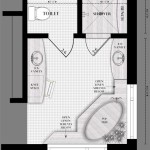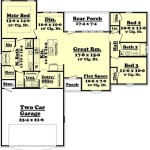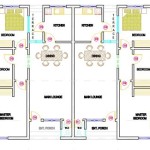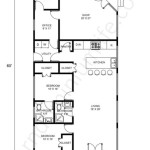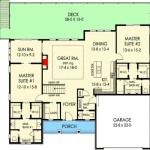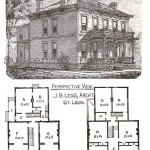Draw A Home Floor Plan
Creating a well-designed floor plan is a crucial step in the home-building process. It serves as a blueprint for the layout and functionality of your future home, ensuring that it meets your specific needs and preferences. Whether you're working with an architect or embarking on a DIY project, understanding the basics of floor plan design will empower you to create a space that reflects your lifestyle and aspirations.
Planning Your Floor Plan:
Start by defining your needs and priorities. Consider the number of bedrooms and bathrooms required, as well as the overall size and shape of the house. Think about the flow of traffic, ensuring seamless movement between different areas. Sketch out a rough layout of rooms, keeping in mind their function and adjacencies.
Scale and Measurements:
Draw your floor plan to scale, using a specific ratio like 1/4 inch equals 1 foot. This allows you to accurately calculate distances and dimensions. Clearly label the measurements of walls, windows, and doors, as well as the overall dimensions of each room.
For more precise measurements, consider using a laser measuring device or a digital measuring wheel. Alternatively, you can work with a professional surveyor to ensure accuracy.
Kitchen and Bathrooms:
These areas require careful planning due to the abundance of appliances, fixtures, and cabinetry. Lay out the kitchen appliances (refrigerator, stove, oven, sink) to create an efficient workflow. In bathrooms, consider the placement of the toilet, sink, shower, and bathtub, ensuring proper spacing and functionality.
Include specific details such as the location of electrical outlets, plumbing fixtures, and windows, as these will impact the overall design.
Living Spaces and Bedrooms:
Consider the size and shape of each living space to accommodate the desired furniture and activities. Think about natural light sources and the placement of windows to create a welcoming and comfortable atmosphere.
For bedrooms, plan for ample closet space and ensure they receive sufficient natural light. If possible, separate bedrooms from high-traffic areas to promote privacy and tranquility.
Flow and Circulation:
Smooth traffic flow is essential for a well-designed floor plan. Avoid creating dead-end hallways or awkward transitions between rooms. Wide hallways and open spaces allow for easy movement and create a sense of spaciousness.
Consider the relationship between different areas, such as the proximity of the kitchen to the dining room or the master suite to the laundry room. Create a flow that enhances convenience and efficiency.
Special Considerations:
In addition to the basic elements, consider additional features that enhance the functionality and livability of your home.
- Outdoor spaces: Plan for patios, decks, or porches that extend the living space outdoors.
- Storage: Dedicate specific areas for storage to keep the house organized and clutter-free.
- Accessibility: If necessary, incorporate features for accessibility, such as wider doorways, ramps, and accessible bathrooms.
Drawing a home floor plan is a meticulous but rewarding task. By following these steps and carefully considering your needs, you can create a functional and beautiful space that will serve you and your family for years to come.

Floor Plan Creator And Designer Free Easy App

Floor Plans Types Symbols Examples

House Plans How To Design Your Home Plan

Floor Plans Types Symbols Examples

House Plan Drawing Everything You Need To Know

Draw Floor Plans In Half The Time Cedreo

Home Floor Plans House Plan Drawings

Draw Floor Plans In Half The Time Cedreo

Easy Home Building Floor Plan Cad Pro

House Plans How To Design Your Home Plan

